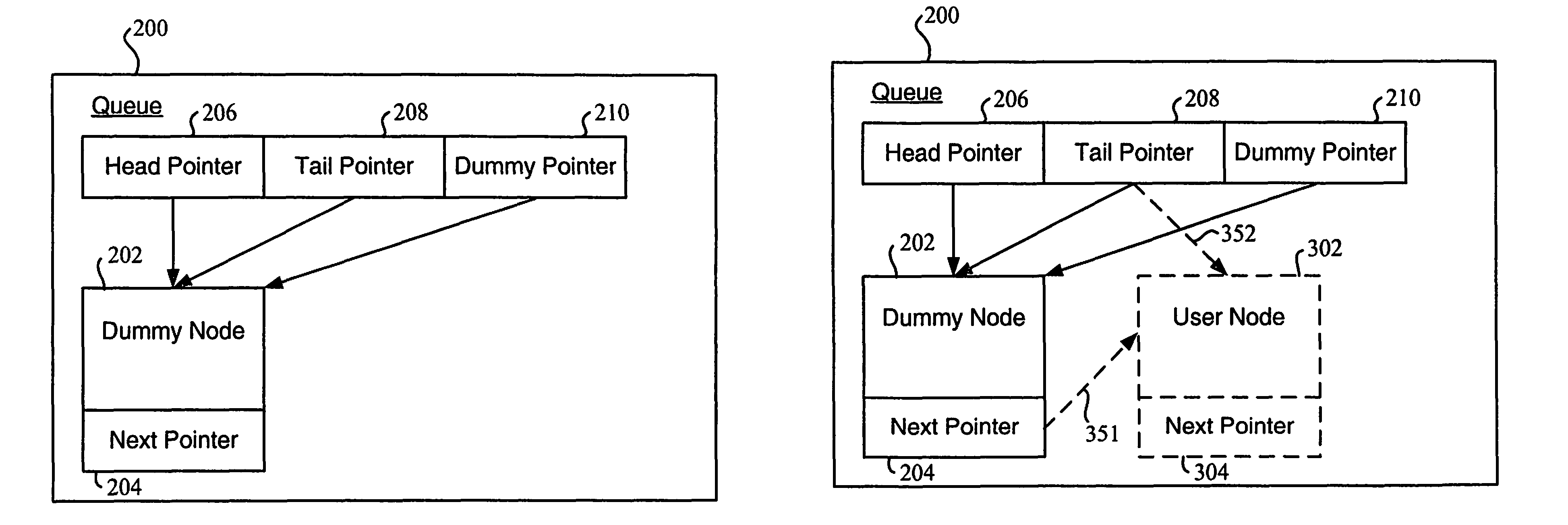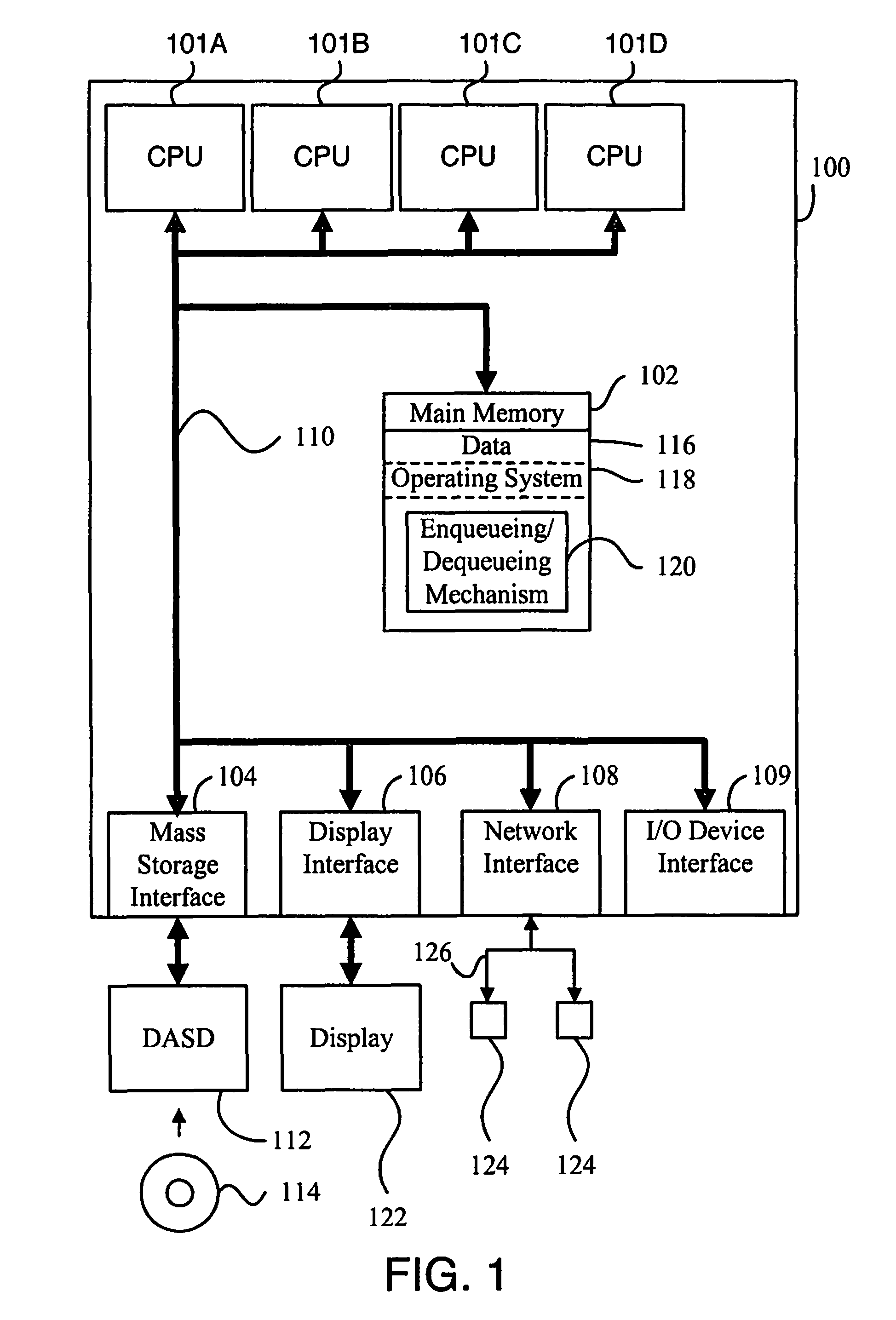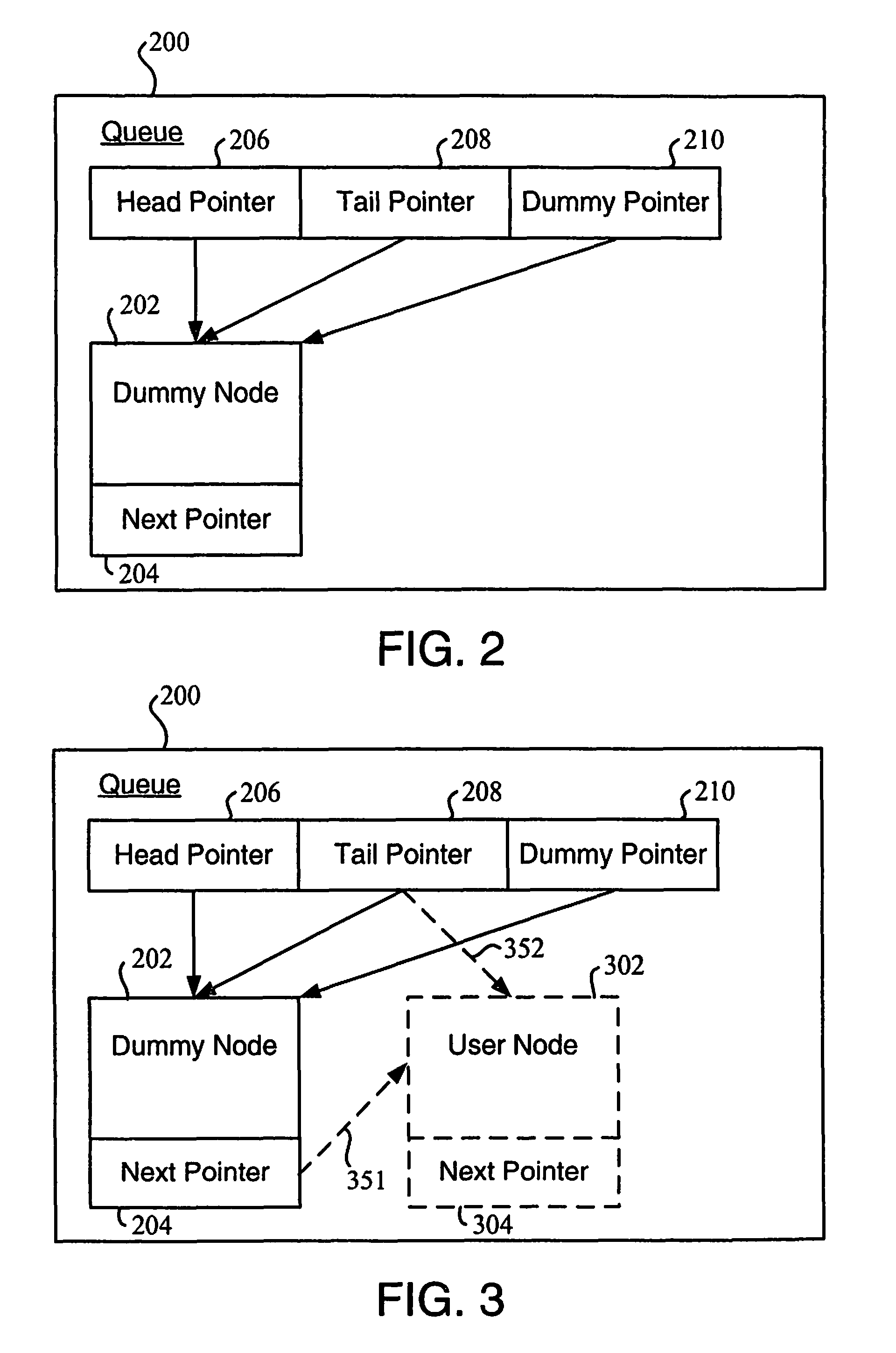Concurrent, non-blocking, lock-free queue and method, apparatus, and computer program product for implementing same
a technology of lock-free and queues, applied in the field of digital data processing, can solve the problems of increasing the complexity of a system, difficult to maintain the integrity of the queue, and disadvantageous performance degradation of blocking algorithms, and achieve the effect of reducing overhead
- Summary
- Abstract
- Description
- Claims
- Application Information
AI Technical Summary
Benefits of technology
Problems solved by technology
Method used
Image
Examples
Embodiment Construction
1.0 Overview
[0048]In accordance with the preferred embodiments of the invention, a concurrent, non-blocking, lock-free FIFO queue is implemented using standard load-linked / store conditional (LL / SC) synchronization primitives. Use of load-linked / store conditional synchronization primitives instead of compare-and-swap (CAS) synchronization primitives solves the ABA problem without requiring some sort of unique number, such as a queue-specific number, and allows more efficient customized code. Accordingly, the preferred embodiments of the present invention contrast with conventional mechanisms that include the use of compare-and-swap synchronization primitives and that address the ABA problem through the use of a unique number. Also, more efficient code can be generated by careful use of load-linked / store conditional synchronization primitives.
[0049]Preferably, an algorithm in accordance with the preferred embodiments of the present invention uses carefully inserted storage ordering fe...
PUM
 Login to View More
Login to View More Abstract
Description
Claims
Application Information
 Login to View More
Login to View More - R&D
- Intellectual Property
- Life Sciences
- Materials
- Tech Scout
- Unparalleled Data Quality
- Higher Quality Content
- 60% Fewer Hallucinations
Browse by: Latest US Patents, China's latest patents, Technical Efficacy Thesaurus, Application Domain, Technology Topic, Popular Technical Reports.
© 2025 PatSnap. All rights reserved.Legal|Privacy policy|Modern Slavery Act Transparency Statement|Sitemap|About US| Contact US: help@patsnap.com



